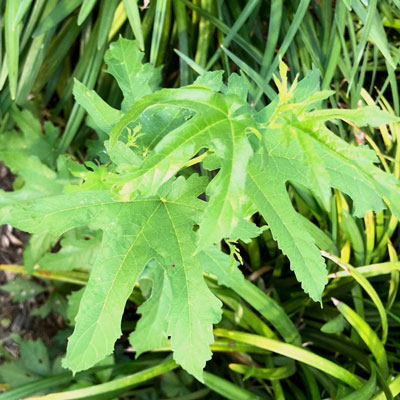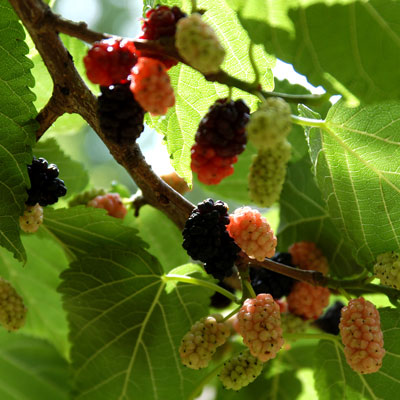Question of the Week Number One: July 25, 2019

“What kind of tree is this, and is it worth transplanting somewhere else in my landscape? I don’t know where it came from.”
The photo shows juvenile foliage of a fruiting mulberry. As the tree becomes mature the lobes won’t be present on next year’s leaves. They will take on a rounded shape. But, once you’ve seen a seedling mulberry and had it identified for you, you’ll always remember it.
The seedling is from a red mulberry. A bird happened along soon after it feasted on mulberries somewhere nearby, and it planted and fertilized the seed for you.

As trees go – just as the trees themselves go – mulberries are pretty and they’re fairly durable. But when it comes to their habits, they’re horribly messy.
This one tree will be producing thousands of fruit within a few years and then you’ll have thousands more seedlings and tens of thousands of flies. You’ll be going to the carwash several times weekly, if not more often. You get the picture.
Point being, there are dozens and dozens of far better shade trees. Don’t encourage more mulberries by transplanting this one.
